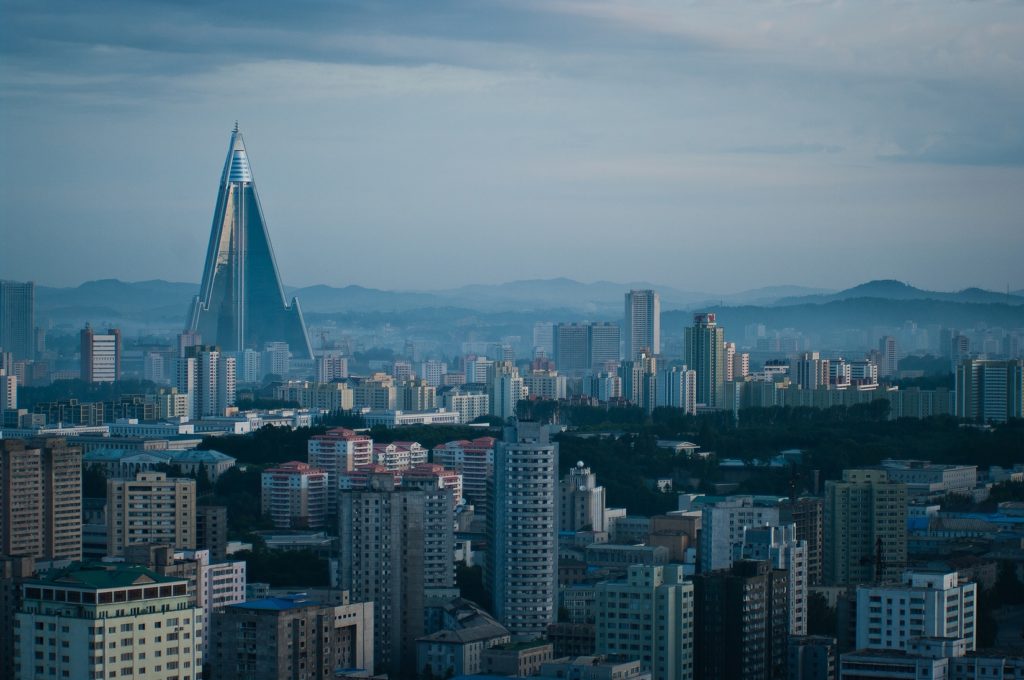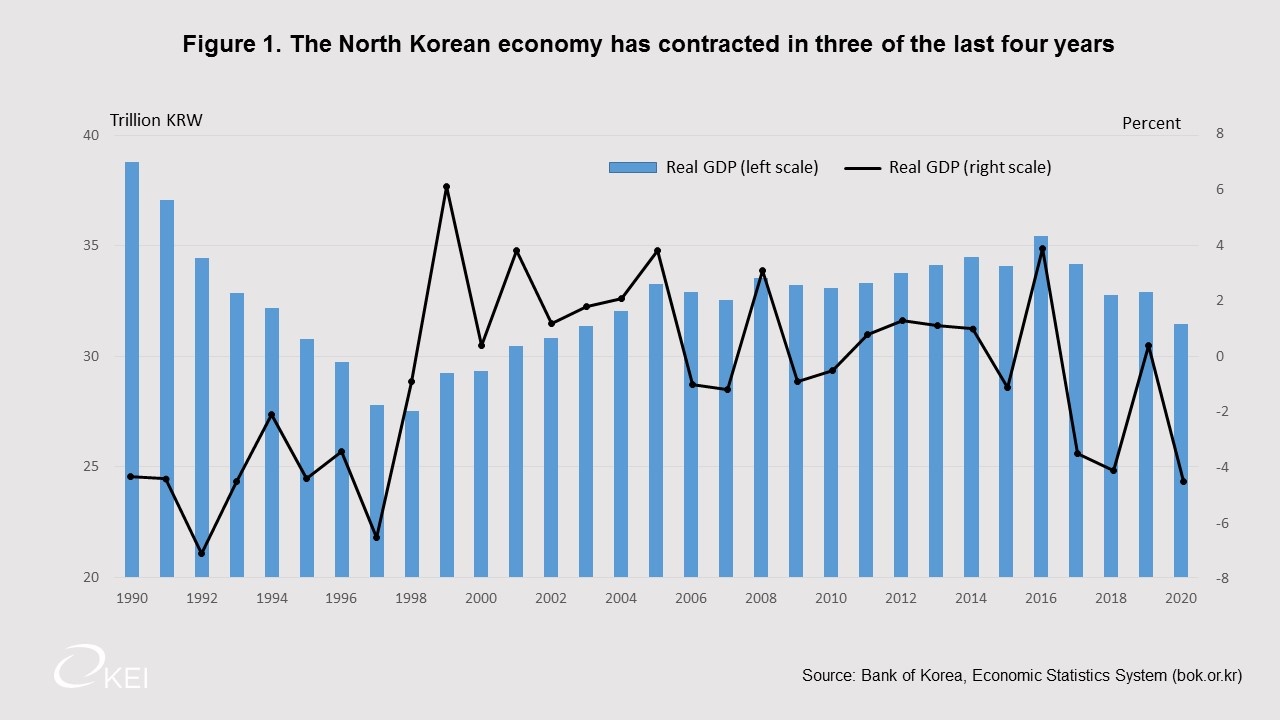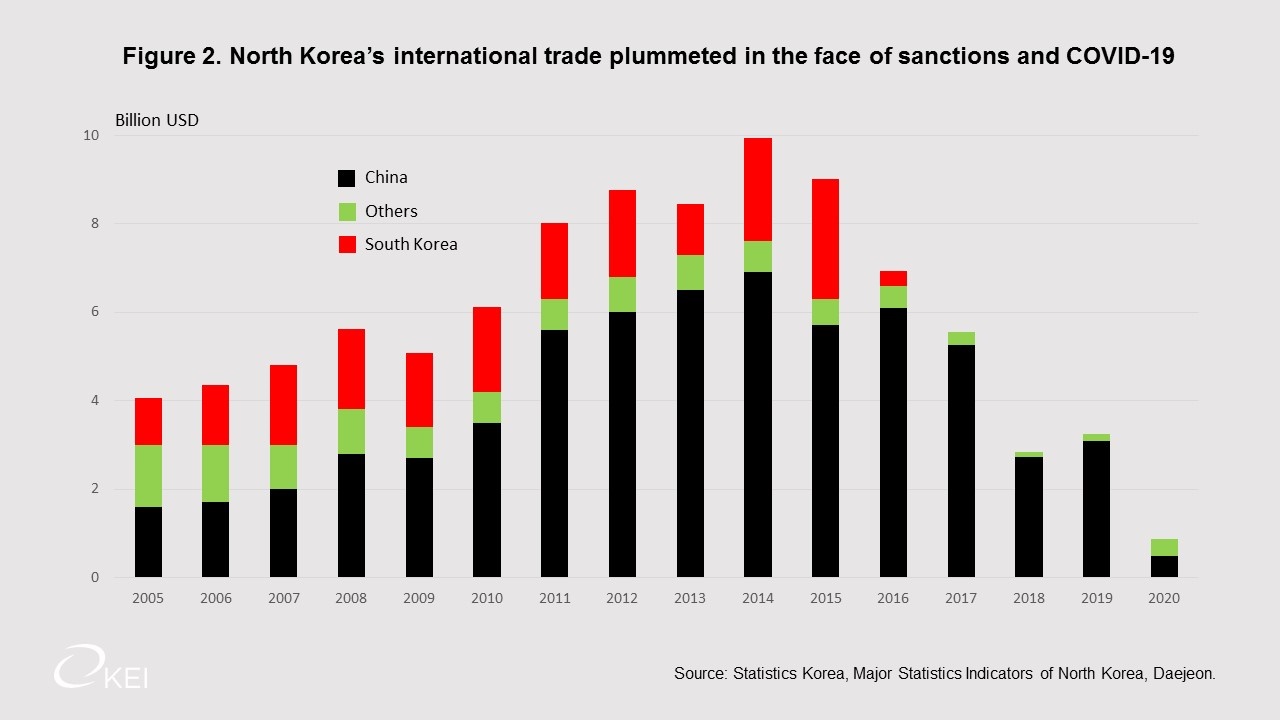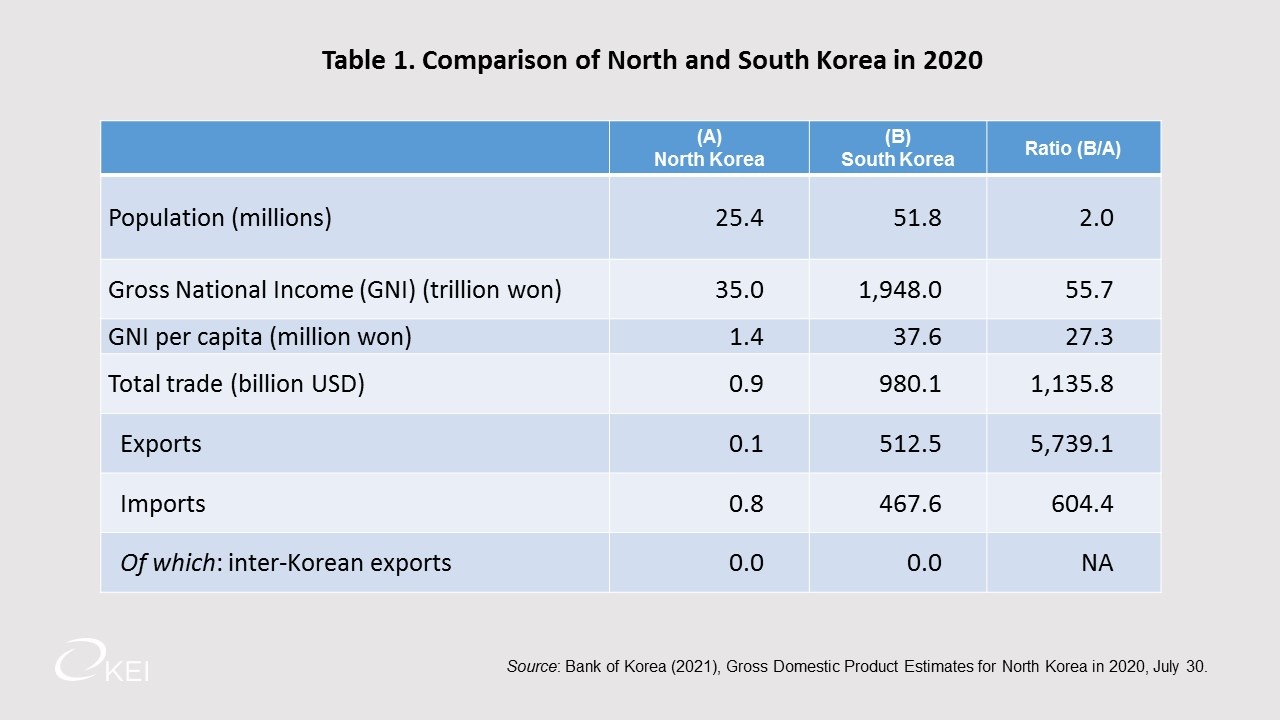The Peninsula
North Korean Economy Shrinks in 2020

North Korea’s real GDP fell by 4.5% in 2020, according to the estimate announced by the Bank of Korea (BoK) at the end of July (Figure 1). It was the steepest decline since 1997 during the “Arduous March,” when North Korea was hit by famine. The downturn last year was caused in part by measures to contain COVID-19 by closing borders, quarantining those with symptoms and banning travel between cities. The economic downturn reduced the North’s real GDP to 31.4 trillion won ($27.4 billion), matching the level in 2003.

The double shock of tighter sanctions in 2016 and the COVID-19 pandemic in 2020 reduced North Korea’s real GDP by 11% over 2016-20, according to the BoK estimate, as its international trade plummeted. Trade between North and South Korea virtually ceased in 2016 with the closure of the Gaeseong Industrial Complex (Figure 2). Trade with China, which had accounted for 95% of North Korea’s international trade, fell nearly 60% from $6 billion in 2016 to less than $3 billion in both 2018 and 2019, as sanctions limited North Korean exports. With the closure of the border in 2020, China-North Korea trade dropped again to only $490 million, as imports from China plummeted. In sum, North Korea’s $860 million of international trade in 2020 was only 13% of its 2016 level. North Korea’s increasing international isolation is illustrated by the drop in its international trade from one-fifth of its GDP in 2016 to less than 3% in 2020.

In his 2020 New Year’s message, Kim Jong Un asked his people to prepare to tighten their belts again. The significant output drop in the North in 2020 further widened the gap with the South, which saw only a 0.9% fall in real GDP. Compared to the 4.8% drop for the OECD area, South Korea’s strong performance reflects its effective response to controlling the COVID-19 pandemic and its timely fiscal measures. According to BoK estimates, gross national income per capita in South Korea was 27.3 times higher than in the North in 2020 (Table 1).

In July 2021, Kim Jong Un issued a warning about food shortages, stating, “the people’s food situation is now getting tense as the agricultural sector failed to fulfill its grain production. It is essential for the whole party and state to concentrate on farming.” There have been reports of sharp increases in the price of rice (Choi, 2021). During the famine in the 1990s, households had to find their own sources of income and food, as they could not rely on the public distribution system. The result was “marketization from below” — a surge in bartering and trading in informal markets (Haggard and Noland, 2009). The North was thus transformed from a centrally-planned economy to a dualistic economy with a state-owned sector supplemented by private activity.
However, the further decline in trade since 2016 and restrictions on domestic travel in the North have had a devastating impact on market activities (Lee, 2021). In addition, the government has placed tighter restrictions on markets. In November 2020, North Korea introduced market management regulations that give the Workers’ Party greater involvement in and control over markets. The new regulations may be an effort to capture more of the profits and foreign currency generated in private markets. However, increased party control risks stifling the further development of markets (Jones, 2021).
Randall Jones is a Non-Resident Fellow at the Korea Economic Institute of America. The views expressed here are the author’s alone.
Photo from Jen Morgan’s photostream on flickr Creative Commons.
References
Choi, Sang-Hun (2021), “North Korea Is Facing a ‘Tense’ Food Shortage,” New York Times, June 16, 2021.
Haggard, S. and M. Noland (2009), “Sanctioning North Korea: The Political Economy of Denuclearization and Proliferation”, Peterson Institute of International Economics Working Paper Series, 09-4, Washington,
Jones, Randall (2021), “A Unified Korean Peninsula Economy: Benefits for both Sides of the 38th Parallel,” in Mason Richey, Jagannath P. Panda, David A. Tizzard (editors), The Future of the Korean Peninsula: Korea 2032 and Beyond, Taylor & Francis Group.
Lee, Suk (2021), “Overview: North Korea’s Economic Crisis, How Far Will It Go?”, 2020/2021 The DPRK Economic Outlook, Korea Development Institute.
